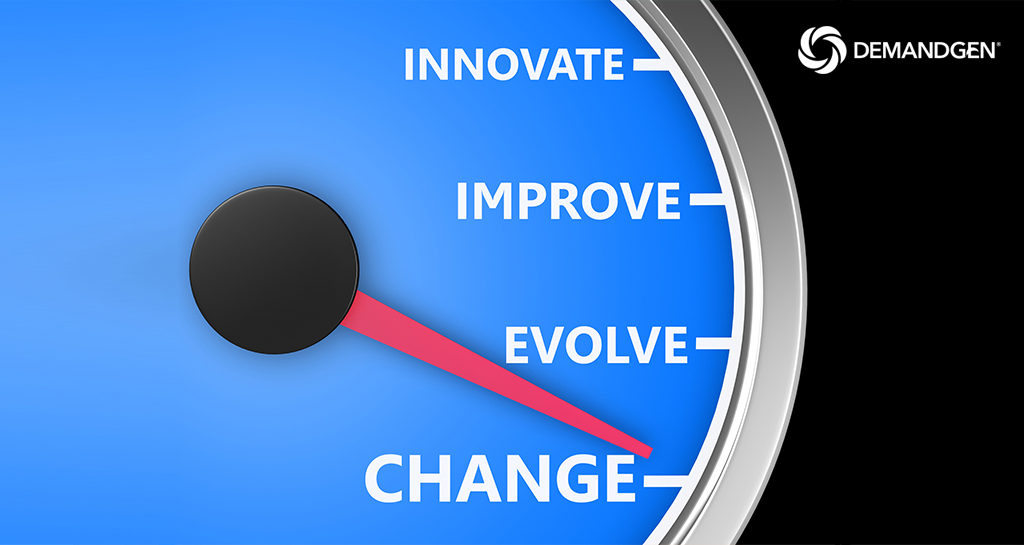
When’s the last time your organization undertook sweeping change and everyone was excited to be active participants in a successful transformation?
According to Gartner, over the past three years the average company — regardless of industry — has embarked on five significant organization-wide changes, with even more expected in the future. However, half of change management initiatives fail. So, what’s a project manager to do?
I’ve spent the past five years managing client projects, from bringing on a new Marketing Automation platform to a complete overhaul of existing systems and processes impacting multiple departments. So, I’ve witnessed the full gamut of potential project derailers — and what can make the difference between a project that crashes and burns and a project that takes an organization to greater heights.
There are any number of reasons a project can run off the rails, but they all typically fall into one (or more — yikes!) of three categories. So, what can you do to tip the project scales in your favor?
- People (aka Why now?)
As much as we may tell ourselves we’re fearless risk takers who meet novelty and change with grace and aplomb, people are very much creatures of habit. I mean, if it were that easy to embrace change, we’d have all said goodbye to our bad habits (e.g., nail biting, not getting enough sleep) and everyone would do all the things they know they’re supposed to be doing (e.g., eat healthier, exercise five time per week). It’s just how most of us are wired.
What’s your biggest motivator? When you’re forced to make a change, or when you’re part of the decision-making process?
Make change a team sport:
- Involve internal stakeholders in the decision-making process (this goes a long way toward acceptance and cooperation)
- Engage “champions” on the affected teams who are well-respected by their peers
- Take advantage of internal workshops and focus groups whenever possible before making the “change” decision
- Demonstrate executive and management support to reinforce the importance of the project and need for change
These additional steps may add a few weeks to your project, but they make the decision to change a team decision, not a “because I said so” decision. And that makes everyone feel more invested in a successful outcome.
- Process (aka I’ve always done it this way.)
When an organization makes a change involving a new system, tool, or piece of software, it always affects both people and process.
I imagine the person who coined, “If it ain’t broke, don’t fix it,” wasn’t too excited about changing their routine. In fact, American author, journalist, and presidential speechwriter William Safire lamented this saying as “a source of inspiration to anti-activists.” The truth is we get used to doing things a certain way. So, how do you get people to move past their initial discomfort?
Provide in-depth training and documentation:
- Invest the time upfront to define how everyone will use the new system once it’s rolled out
- Offer step-by-step training to everyone impacted by the change to ease the transition
- Provide comprehensive documentation for future reference (and future employees) so that when key players leave, new hires can hit the ground running
We are all trying to do more with less these days, and nothing is more frustrating than getting stuck or confused trying to figure out something new or performing tedious administrative work because no one took the time up front to find — and document — a better way.
- Communication (aka What’s in it for me?)
It’s said that communication is the foundation of a healthy relationship, and that extends to business relationships. Poor communication, miscommunication, no communication, communicating the wrong things — they’re all recipes for disaster when it comes to moving a project forward.
Communicate, communicate, communicate — and communicate some more:
- Carefully plan before implementing change, and communicate that plan early and often
- Communicate not only the business value of change, but also how it will benefit individual team members
- Anticipate questions and reactions from team members, and answer them before they ask (e.g., “When will this start affecting me and my job?”)
My biggest pet peeve when it comes to change is not being told why things are changing. So, in addition to involving key stakeholders in the decision-making process, let them know how the change will ultimately benefit them and the business. And keep them informed every step of the way.
One final tip
Need help creating positive change in your organization? Bring on an experienced a partner who has successfully implemented the same type of projects for other organizations! DemandGen offers a number of services specifically designed to help bridge the gap between creativity, strategy, and execution, master evolving technologies and processes, and achieve maximum results. We’ve been there, done that. How can we help?
 Angela Brock Schaffer is a Client Engagement Manager at DemandGen. She works directly with clients to help advance their business needs, develop long-range marketing plans, and drive ongoing success with their marketing initiatives. Angela is Marketo Certified and she is an Eloqua Product and RPM Master.
Angela Brock Schaffer is a Client Engagement Manager at DemandGen. She works directly with clients to help advance their business needs, develop long-range marketing plans, and drive ongoing success with their marketing initiatives. Angela is Marketo Certified and she is an Eloqua Product and RPM Master.
The post Focus on These 3 Things to Effectively Manage Change in Your Organization appeared first on DemandGen.
About the Author
More Content by DemandGen























